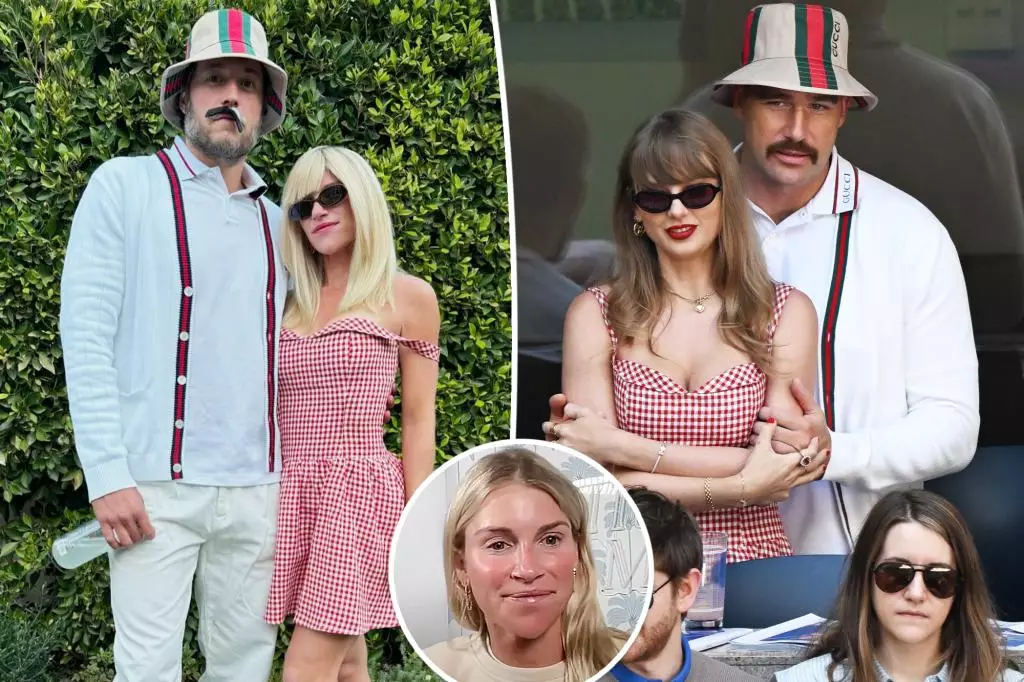Halloween often provides an opportunity for playful mimicry and commentary on current events, and this year was no exception for Kelly and Matt Stafford. The couple donned costumes representing pop icon Taylor Swift and NFL star Travis Kelce, echoing the couple’s appearance at the U.S. Open. Social media buzzed with the photos Kelly shared, where a playful faux mustache on Matt was a humorous detail amidst the familial tribute to Swift. Their daughters, clad in outfits inspired by Swift’s tour looks, added to the drama of the night, indicating that the family’s Halloween festivities were not merely about fun but a reflection of broader cultural conversations.
The choice to imitate such prominent figures raises questions about the nature of celebrity in today’s society. Kelly’s lighthearted approach belies a deeper sentiment—her earlier remarks about being “tired” of ongoing media coverage surrounding Swift and Kelce reveal a poignant struggle with the implications of celebrity status. It seems that behind the festive facade lies a sense of exhaustion from watching the spectacle unfold to the detriment of more pressing narratives, such as the game’s performance itself.
In a recent podcast episode, Kelly Stafford opened up about her feelings towards the media frenzy engulfing the NFL due to Swift’s involvement with Kelce. Initially, her reaction came off as being disgruntled about the attention Swift seemed to overshadow in the sports world. However, Kelly’s admission that her frustration was rooted in her own feelings of jealousy is particularly revealing. The notion that someone outside of the sports community could eclipse the actual athletes and the intensity of the game raises significant discussions about cultural dynamics, attention economy, and personal identity.
As Kelly herself articulated, her discomfort isn’t a reflection of disdain towards Swift; rather, it underscores an emotional response to feeling sidelined or overshadowed. Many fans resonate with the sentiment that entertainment often takes precedence over the games they love, leading to a dilution of the sport’s integrity. In acknowledging her jealousy, Kelly offers a rare glimpse into the complex emotions that run through the lives of partners of professional athletes. They navigate personal insecurities while wrestling with public perceptions and expectations shaped by media narratives.
Moreover, the phenomenon of Swift dominating NFL narratives raises broader implications regarding the relationship between sports and pop culture. Kelly’s observations shed light on how media coverage can sometimes prioritize sensational headlines over the more nuanced aspects of the athletic world. As she pointed out, Swift’s frequent appearances have shifted the focus to her celebrity status rather than the actual sport, transforming thrilling playoff moments into a backdrop for romantic entanglements.
This commentary becomes all the more intriguing in an era in which athletes are at the mercy of social media’s relentless pursuit of clicks and engagement. The challenge for the NFL—and indeed for any sports organization—lies in finding the balance between lucrative partnerships that draw viewers and preserving the authenticity of the game itself.
The Staffords’ Halloween costumes serve as a microcosm of a larger narrative about the intersection of celebrity culture and the sports arena. Whether one interprets Kelly’s journey through jealousy as self-reflection or as a critique of media practices, her insights highlight the complexities within celebrity relationships and the ripple effects they have on various communities, ultimately prompting a much-needed dialogue on priorities in both sports and entertainment.


Leave a Reply